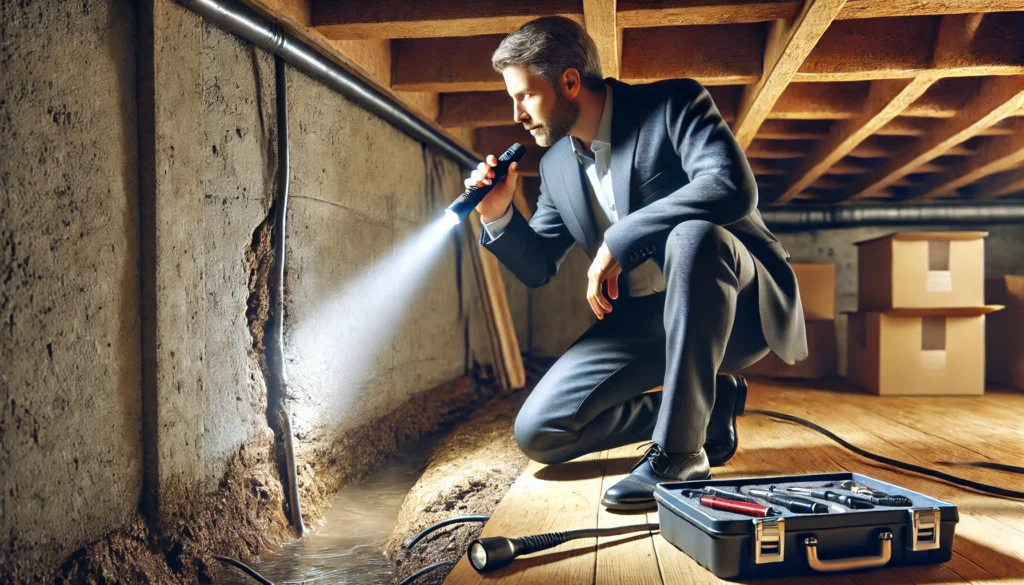Purchasing a property is a significant financial and emotional milestone. Whether it’s a family home or a commercial building, ensuring you are making a sound investment is critical. A pre-purchase property assessment is an essential step in safeguarding your investment, uncovering potential issues, and avoiding costly surprises down the line. This comprehensive guide explains the importance of inspections, their procedure, and how to engage reliable professionals for the job.
What is a Pre-Purchase Property Assessment?
A pre-purchase property assessment, also known as a building inspection, involves evaluating the condition of a property before purchase. This inspection helps identify potential issues ranging from structural problems to pest infestations. Armed with this information, buyers can make informed decisions and negotiate repairs or price adjustments if necessary.
Why is it Important?
- Protects Your Investment: Prevents unforeseen costs and legal hassles.
- Ensures Safety: Identifies hazards such as faulty wiring or structural weaknesses.
- Negotiation Leverage: Provides evidence to request repairs or discounts.
- Compliance Verification: Ensures the property meets local building regulations.
Key Components of a Pre-Purchase Property Assessment
A pre-purchase inspection covers various critical aspects of the property. Here’s what a typical assessment involves:
1. Civil and Structural (C&S) Inspection
The cornerstone of any property inspection, focusing on:
- Foundation Stability: Checking for cracks or uneven settlement.
- Walls and Roofs: Inspecting for water damage, mold, or structural issues.
- Load-Bearing Elements: Verifying the integrity of beams, columns, and supports.
2. Electrical Systems
A detailed evaluation of the property’s electrical components, ensuring they are safe and functional:
- Wiring and circuit breakers.
- Outlets, fixtures, and switches.
- Grounding and bonding compliance.
3. Plumbing Inspection
An essential check to avoid water-related issues:
- Leaks in pipes, faucets, and drains.
- Water pressure and flow.
- Water heater functionality.
4. Roofing and Attic
Inspectors physically access the roof and attic to assess:
- Shingles, tiles, and gutters for wear or leaks.
- Ventilation systems to prevent moisture buildup.
- Structural integrity of roof supports.
5. Pest Inspection
Detecting pest infestations such as:
- Termites causing wood damage.
- Rodents and other pests compromising sanitation and safety.
6. Optional Mechanical & Electrical (M&E) Inspections
While M&E inspections are optional, they are recommended if significant issues arise during the C&S inspection. These assessments cover:
- HVAC systems.
- Elevators and fire protection equipment.
- Advanced mechanical systems in commercial or high-tech properties.
Method or Procedure of Pre-Purchase Property Inspection
Understanding the systematic procedure of an inspection provides clarity on the thoroughness involved. Below is a step-by-step guide:
Step 1: Initial Consultation and Agreement
The inspector discusses the buyer’s concerns, outlines the scope of the inspection, and formalizes it in a Pre-Inspection Agreement.
Step 2: Exterior Inspection
Evaluates the external aspects of the property:
- Foundation, walls, and roof for cracks or damage.
- Site conditions, including drainage and landscaping.
Step 3: Interior Inspection
Covers all accessible spaces within the building:
- Structural components like ceilings, floors, and walls.
- Windows and doors for proper sealing and alignment.
- Basements and attics for signs of water intrusion or poor ventilation.
Step 4: Systems Assessment
Focuses on essential systems:
- Plumbing for leaks, pressure, and water heater efficiency.
- Electrical systems for wiring, outlets, and compliance.
- Optional M&E systems if requested.

Step 5: Specialized Inspections
Optional inspections are conducted based on findings, such as:
- M&E systems for commercial buildings or high-tech homes.
- Environmental hazards (e.g., asbestos or lead in older properties).
- Pests or termites if infestations are suspected.
Step 6: Roof and Attic Inspection
Assess roofing materials, gutters, ventilation, and insulation for durability and efficiency.
Step 7: Documentation of Findings
The inspector documents:
- Issues and potential risks.
- Photographic evidence and compliance status.
- Recommendations for repairs or further evaluations.
Step 8: Post-Inspection Consultation
The inspector explains findings, highlighting critical issues and answering questions.
Step 9: Final Report
A comprehensive report includes:
- Detailed descriptions of issues.
- Photographic evidence.
- Repair cost estimates and recommendations.
Step 10: Follow-Up Actions
Based on the report, buyers can:
- Negotiate repairs or price adjustments.
- Arrange further inspections if necessary.
- Proceed confidently with the purchase.
Common Issues Identified During Inspections
Here are the most frequently uncovered problems during pre-purchase assessments:
| Category | Common Issues |
|---|---|
| Structural Issues | Foundation cracks, sagging roofs, bowing walls. |
| Electrical Problems | Exposed wiring, outdated systems, overloaded circuits. |
| Plumbing Failures | Leaking pipes, low water pressure, corroded systems. |
| Roofing Defects | Missing shingles, damaged gutters, water pooling. |
| Pests | Termite infestations, rodent activity, structural damage caused by pests. |
When to Include an M&E Inspection
While M&E inspections are optional, they should be included in these scenarios:
- Major Structural Defects Found: If the C&S inspection reveals issues that could affect mechanical systems.
- Large or Complex Properties: High-tech homes or commercial buildings with intricate systems.
- Older Properties: Buildings over 20 years old often have aging or outdated systems requiring separate evaluations.
Pro Inspect Solution: Comprehensive Property Inspection Services in Malaysia
If you’re buying property in Malaysia, Pro Inspect Solution is a trusted name in pre-purchase inspections. Their experienced professionals specialize in Civil & Structural (C&S) assessments and can include optional Mechanical & Electrical (M&E) inspections upon request.
Why Choose Pro Inspect Solution?
- Certified Inspectors: Licensed and experienced professionals.
- Detailed Reports: Comprehensive findings with actionable recommendations.
- Customizable Services: Tailored for residential, commercial, or industrial properties.
- Nationwide Coverage: Available in major cities such as Kuala Lumpur, Johor Bahru, and Penang.
Learn more about Pro Inspect Solution’s services here.
Tips for a Successful Pre-Purchase Property Assessment
- Be Present During the Inspection: Observing the inspection firsthand helps you understand potential issues better.
- Ask Questions: Clarify any doubts about the findings or recommendations.
- Focus on Major Defects: Prioritize safety and compliance issues over cosmetic imperfections.
- Review the Report Thoroughly: Ensure you understand the implications of each finding.
- Plan for Maintenance: Use the inspection report to anticipate future maintenance needs.
FAQs: Pre-Purchase Property Assessments
Q1: How much does a pre-purchase inspection cost?
The cost depends on property size and complexity, typically ranging starts from RM 5,000.
Q2: Are inspections necessary for new properties?
Yes, even new properties can have construction defects or non-compliant systems.
Q3: What should I do if the inspection reveals major defects?
You can negotiate repairs, adjust your offer, or reconsider the purchase.
Q4: Is M&E inspection always required?
No, M&E inspections are optional but recommended in case of major structural issues or for complex properties.
Q5: Can I inspect the property myself?
While you can observe visible issues, only a professional can conduct a thorough and detailed assessment.
Conclusion
A pre-purchase property assessment is an indispensable step in the home-buying journey. It protects your investment, ensures safety, and provides peace of mind. Whether you’re buying a home in Malaysia or anywhere else, engaging professionals like Pro Inspect Solution can make all the difference. By following the detailed process and tips outlined in this guide, you can approach your property purchase with confidence and clarity.


